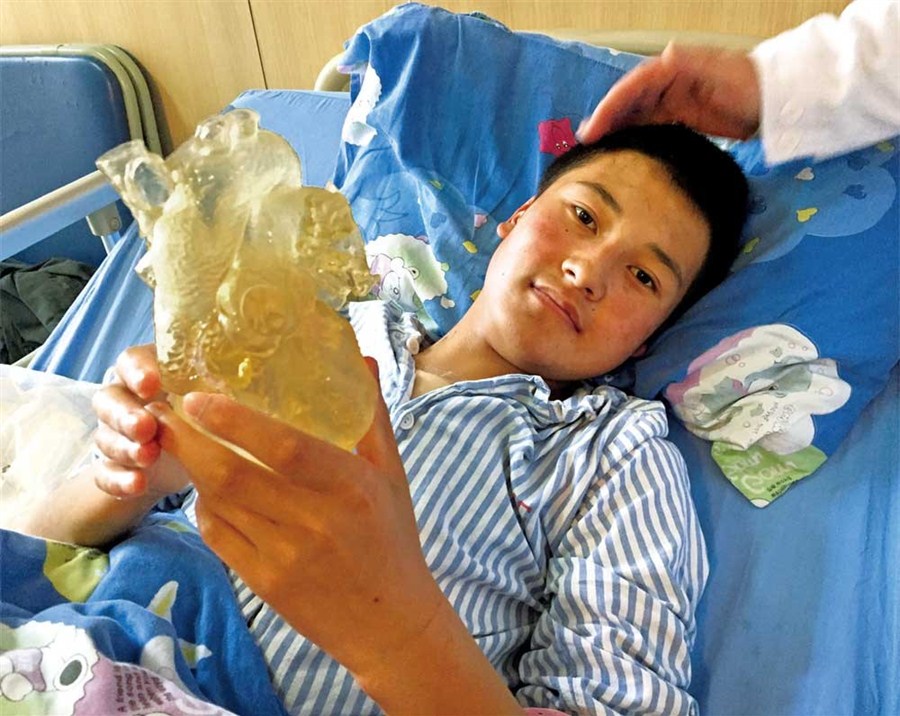The heart of the matter: 3D printing can save lives

Sixteen-year-old Ma Chengqiang from Qinghai Province recovered after a complicated heart surgery in the Shanghai Children’s Medical Center. The surgery is helped with 3D printing technology, which is expected to be widely used in medical organizations in China.
SIXTEEN-YEAR-OLD Ma Chengqiang and 8-month-old Yang Youhong, both from remote Qinghai Province, owe their lives to 3D printing.
The two children are beneficiaries of a charity called Little Hearts of China, which arranges life-saving heart surgery in Shanghai, utilizing 3D printing technologies.
The project, which focuses on helping children from impoverished rural regions, is sponsored by the Shanghai Children’s Medical Center and Materialise, a Belgium-based 3D printing software and service provider.
Doctors can print out models of a patient’s heart based on CT imaging. Diseased areas are marked by different colors and materials. That allows surgeons to see clearly what they are dealing with and what needs to be done. That’s important in higher-risk surgeries involving babies and the elderly.
“The technology is a beacon of hope for these children,” said Liu Jinfen, head of the center’s heart disease research institute.
The institute was one of the first medical organizations in China to adopt 3D printing in heart surgery. It has established a research team and database collection. Heart disease in children is carefully recorded at a crossroad between technology and healthcare.
“We are so lucky to have the world’s latest 3D printing technology,” said Ma Wenming, grandfather of 16-year-old Chengqiang after his successful surgery. “It’s something that is beyond the comprehension of simple folk like us.”
Chengqiang was diagnosed with a complicated heart disease that couldn’t be treated in the Qinghai hospitals in far western China. The family also couldn’t afford the 100,000 yuan (US$14,492) cost of surgery elsewhere.
Each year, Shanghai Children’s Medical Center conducts more than 3,700 heart operations, ranking it among the top global medical institutions.
More than 100 children have needed complicated surgeries requiring the assistance of 3D printing technology, but with limited research funds, only 15 to 20 of the cases could tap the 3D resources, said Liu.
The center is hoping government authorities will approve 3D printing services as a subsidized medical expense.
3D printing in China has great potential, said Kim Francois, general manager of Materialise China, the center’s strategy partner.
The medical sector in the Asia-Pacific region outside Japan is set to see the strongest growth in 3D printing, especially in China, according to US-based research firm International Data Corp.
















